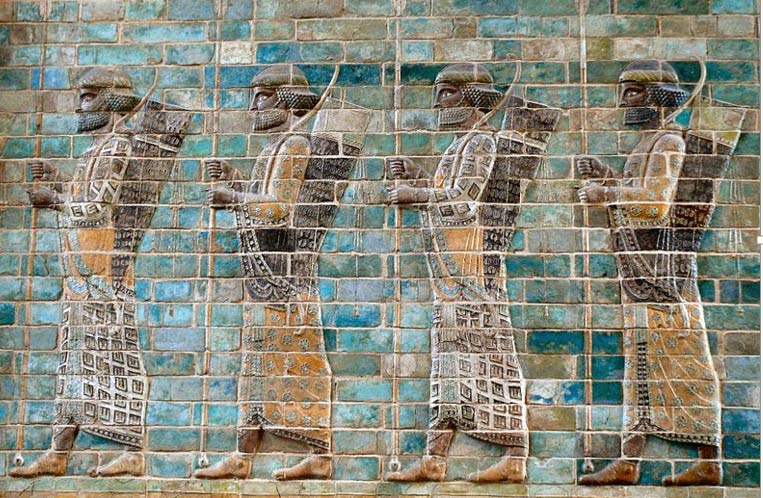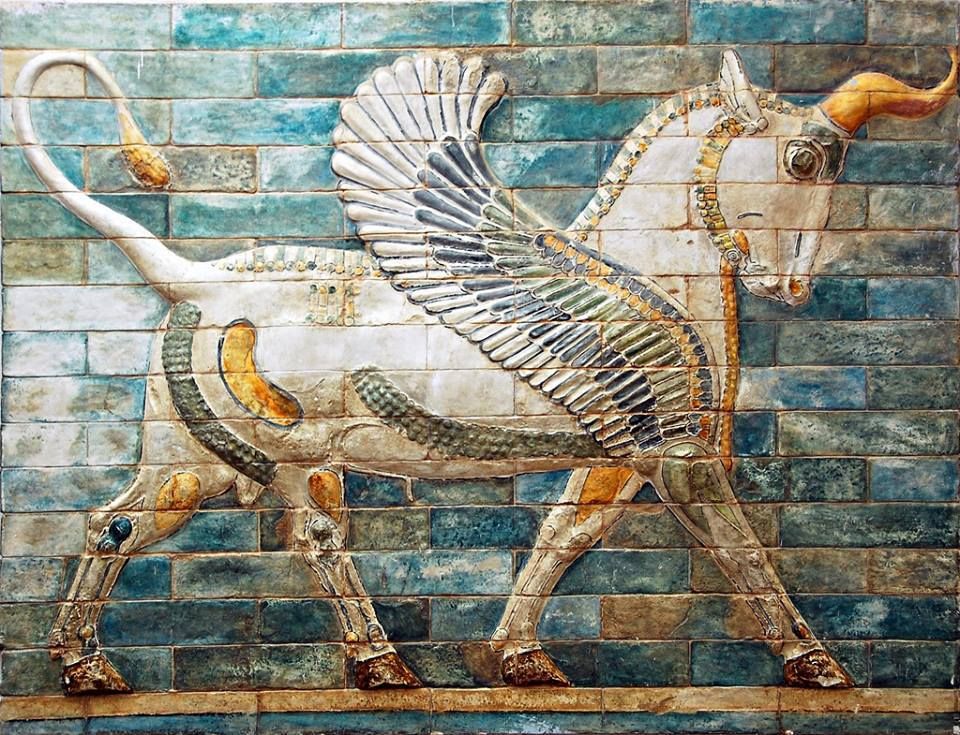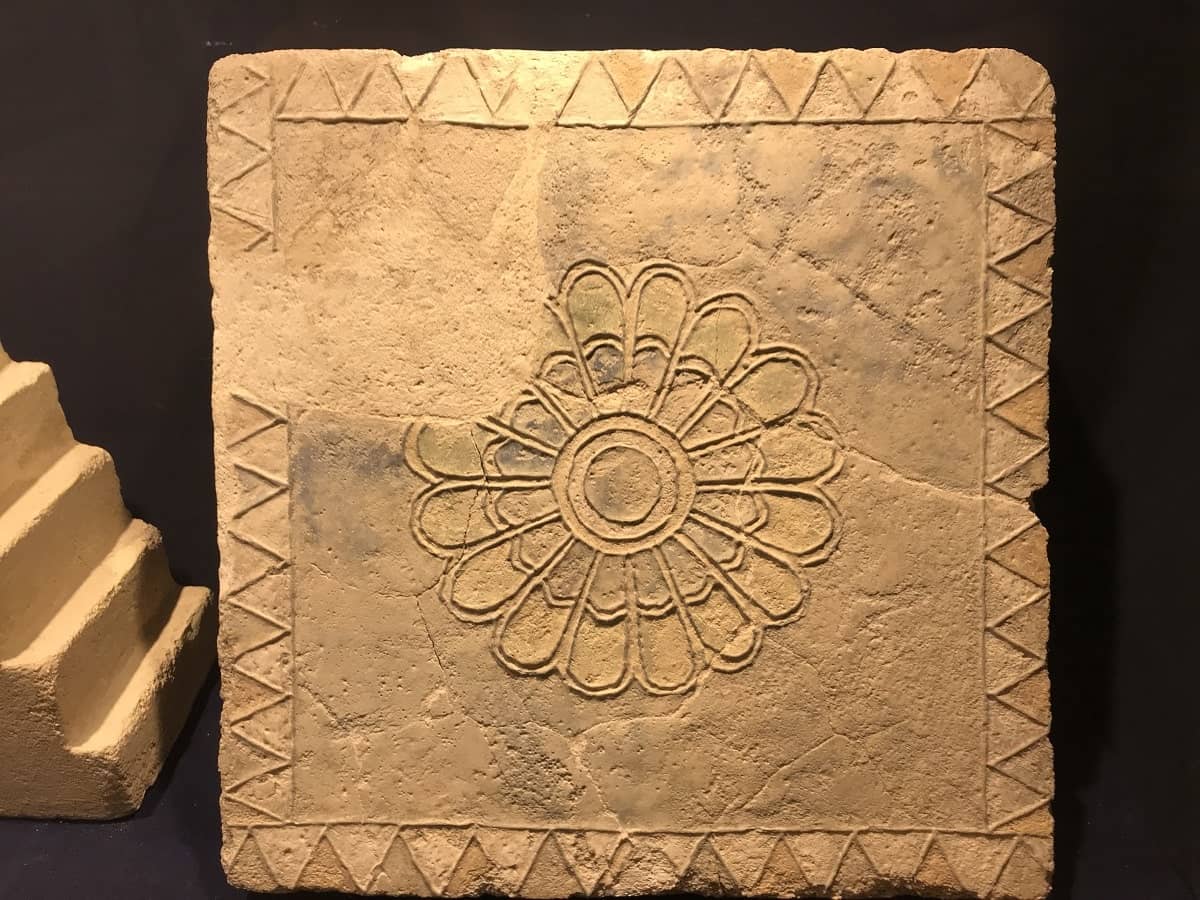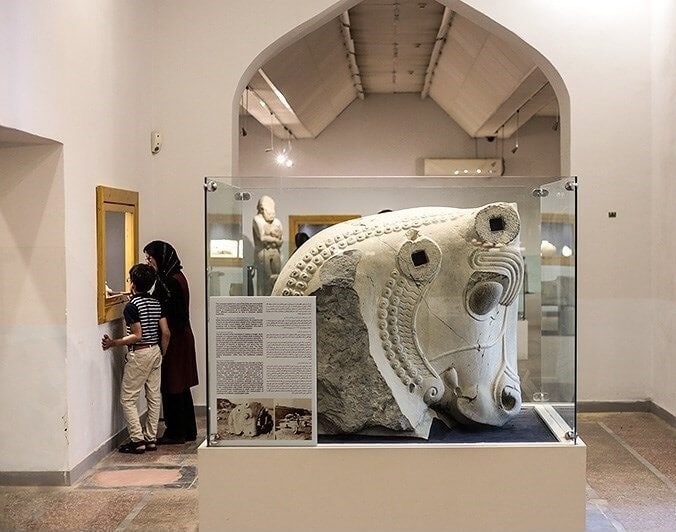Introduction to Susa
The city of Susa is one of the most historic cities in the world that has many secrets in its heart. Susa is one of the most famous, largest, and most magnificent cities which once had a bourgeoisie. This region is, in a sense, the birthplace of the earliest human civilizations, which has long been of interest to the ruling dynasties, and this has led to the emergence of rare historical phenomena in the region. The capital of the world’s most powerful empires, also known as Susa Daniel. This city is located in the north of Khuzestan (Ahvaz) province and southwestern Persia.
Susa is the birthplace of the first cohesive civilization on the borders of Persia, namely the Elamite civilization, one of the oldest cities in Persia and human history. The city contains remarkable historical events from the reign of the kings and emperors of ancient Persia, such as the reign of the Achaemenid kingdom, which archaeologists date back to 4000 B.C.

capital of the empire.
History of Susa
Susa has been present in the history scene since the beginning of the fourth millennium B.C. and had been an artistic, industrial, commercial, and political center from the very beginning. It can be said that the reason for the great fame of this city is the two golden eras that it has gone through, the first period of the Enshushinak era and the second duration of this city which was during the reign of Darius I during the Achaemenid dynasty. The ancient city of Susa was the center of Ilam’s civilization. Susa had been the capital since about 2700 B.C. that continued until the end of the Achaemenid Empire, which is over 3,000 years old. Historical documents show that the Elamites ruled the region for 2,000 years. The city was destroyed by Assyrian King, Anwar Banipal, but remained important.

Discovery of Susa
It was during the reign of Nasser al-Din Shah that the French realized the city of Susa was very old and archaeologically had special importance. It was speculated that this land was the legendary city of Susa, but no one knew its exact location. Archaeological excavations in the area have severely damaged the ancient Susa textures. The works that safely came out of these excavations, were illegally taken out of Persia. You can see some of these works today at the Louvre Museum in Paris. Among the most important stolen works are the two-headed cow’s head, the glazed brick walls with the role of cows, lions, and humans, as well as ancient vessels and inscriptions. When the French were forced to leave Susa, they destroyed everything left to add to the value of their treasures.

The Meaning of the Name Susa
In ancient texts, Susa is a very important city. Some consider Shush to mean happy and others consider Shush or Shushan to mean lily. But in the past, Shush was probably called Shushun or Shushan, which was inspired by an Elamite goddess named Inshushinak. Also, Susa and Susiana are mentioned as the olden names of this city, which are stated in historical books. Great and influential people lived in this city, which is named in the Torah and the Bible. The name Shush in the Torah is mostly used in the story of Ishtar or Astar. The ancient region of Susa can be divided into four main parts. Each of these four sections tells a part of the story of ancient Susa. These main parts are Acropolis Hill, Apadana Hill, Pishvaran City, and Susa City.

Susa During the Achaemenid
The city of Susa regained its former prosperity during the era of Achaemenid Darius and was used as the winter capital during the Achaemenid rule. Evidence from historical artifacts from the Parthian, Seleucid, Sassanid, and post-Islamic periods, shows the importance of the city, which makes it a museum of prehistoric, historical, and Islamic times in Persia. Shush was a very populous city with a large population, which was only after the devastating Mongol invasions that turned the city into ruins. Documents have been obtained in the form of inscriptions, most of the topics related to these inscriptions have been economic issues such as buying and selling land, wills, etc. about Elamite after the 25th century B.C. Remains from Susa demonstrate that women in this city had a social status similar to that of men during the Elamite duration. These documents show the signatures and seals of women in transactions.
Archaeological excavations in Susa
In 1880, a group of French archaeologists excavated the palace. They concluded that the palace had been destroyed by natural death. After the extinction of the Achaemenids, because it was gradually abandoned, it felt the abandonment of destruction on its walls. The palace had a meeting even during the Achaemenid period. At that time, they were trying to repair it. Madame Jean Diolafova was the wife of Marcel Auguste Diolafova (1843-1920), a French civil engineer and archaeologist, and she and her husband traveled to Persia three times for archaeological excavations by the French government.
Their first voyage was to the southern ports of Persia in 1881. Madame Diolafova compiled her husband’s social studies and observations and archaeological finds in diaries and published them in two separate books. The French transferred part of the remains from the Louvre Museum, and some of them were used as materials to build a castle called the French Castle near the palace. In a travelogue entitled The Morgan Travels, a French explorer named Jean Demorgan describes how objects were transported and the difficulties of the route, and the thefts of indigenous peoples.

capital of the empire in Ahvaz.
Discovery of An Inscription from the Reign of Darius in Susa
One of the important points in the excavations of Apadana Palace is the discovery of an inscription related to the reign of Darius the Great and the construction of Susa Palace. The theme is as follows: Ardashir, the great king, king of kings, king of the people, king on earth, son of Darius Shah, Darius son of Ardeshir Shah, Ardeshir son of Xerxes, Xerxes son of Darius Shah, Darius son and Pashtaspeh. Achaemenid says: My grandfather Darius built this Apadana. Then in the time of my grandfather Ardeshir, Apadana burned. Now, at the request of Ahuramazda, Anahita, and Mitra, I ordered the reconstruction of Apadana. Ahuramazda, Anahita, and Mitra protect me from all evils and what I did.
Manifestation of Susa on Persepolis
The design of this building is repeated in Persepolis. The naming of Apadana on the public hall of Persepolis is due to its resemblance to the Apadana of Susa. The difference is that the hall of Susa Palace was a little bigger than Persepolis Hall. Apadana is not the name of a castle, but the ancient name of a building known for its columned halls and inspired by ancient Greek architecture. You can see the best examples of Apadana in Persepolis and Susa Palace. There is one of the best Apadana in Susa Daniel.
Persepolis and Susa Apadana palace
The Apadana Palace of Susa is the winter palace of the Achaemenid kings, built by the order of Darius I around 515 to 521 BC in Susa. Although this building is known as Apadana, the word Apadana is not the name of a palace and is an architectural style that belongs to buildings with columned halls in the period of ancient Persia, especially the Achaemenid dynasty. This type of style is currently visible in Persepolis and Susa’s palace. One of the admirable points that the architects and designers of this historical complex have considered is the presence of a platform on which Apadana Palace seems to have been built. As you know, the palaces built in the Persepolis complex are located on a plateau of stone, which is known as the foothills of Mount Rahmat. Flattening such a part, which is 12 hectares, has been very difficult and heavy.
Susa Canalization
Canalization on such a rock seems difficult and exhausting, and this is the art and mastery of the architects and builders of this great historical monument. This is while in the Apadana Palace of Susa, you will see the wonderful art of architecture, which is interesting and praiseworthy, because in this amazing complex, there is no natural plate like the Persepolis complex, and the designers and builders of this palace are from a platform. Artificially used. This is where the masterpiece of architectural art during the Achaemenid rule can be seen.
Architects and archaeologists have estimated the dimensions of this artificial plateau to be approximately equal to the dimensions of the rock of the Persepolis complex. It seems that after the rock was flattened, the Babylonian architects and engineers used raw clay in a thousand-year-old way and laid the foundation of the Apadana Palace building. Certainly, this operation is very hard and tedious and they have taken a long time to build it.
The city of Craftsmen
Professionals and artisans were not ordinary people in the past. The art of the artists and craftsmen of Susa was even better than the rest of the places, as Tapira Asso’s statue alone proves. These craftsmen, artisans, and artists lived in a magnificent town in which the Shahur or Shavor Palace was built.
Royal City
In ancient times, the government was not just about the king and his family. Elders, nobles, and officials also lived in the royal city.
Susa Apadana Palace
The winter palace of the kings during the Achaemenid period was built by the order of Darius the Great in Susa. The brick walls and stone pillars of this historic and unique palace showcase a dazzling view of the lotus flower, the winged lion, and the eternal corps, and the capitals are made in the shape of a cow’s head. Unfortunately, the Apadana Palace was destroyed during the Alexander the Great invasion of Persia and was destroyed like other Achaemenid palaces. Today, the ruins of this magnificent palace are left.
The historic castle of Susa, also known as the Castle of the French or Acropolis, was built by a Frenchman named Jacques Marie Jacques Demorgan to house French archaeologists for 15 years. One of the most important historical monuments discovered in this collection is the famous statue of Queen Napier Assoston. Other archeological sites in Shush include the tomb of Daniel the Prophet, the Shush Grand Mosque, the Shavor Palace, and the Karkheh Porch.
Tomb of Daniel the Prophet
One of the sights of Susa is the tomb of the prophet Daniel. He is one of the prophets of Jewish in the seventh century B.C. The first event that influenced Daniel the prophet was the interpretation of the dream of King Nebuchadnezzar, thus revealing his prophethood and attracting the king’s attention.
Shavor Palace
Another historical monument of Susa is Shavor or Hadish Palace, which was built during the Achaemenid period by order of Ardashir II and was a magnificent hall with 64 columns and stone pillars of this palace, and its main building was made of clay. The palace was discovered on the west bank of the Shavor River in the city of Susa, during a civil engineering operation, and several stone carvings were found depicting vigilant guards and servants carrying food utensils.
Ivan Karkheh
This monument dates back to the reign of Shapur II during the Sassanid era. This city is called the most complete and largest city that has been buried since the Sassanid era.
Shush Grand Mosque
The city of Shush is one of the first cities where Muslims entered, and the Shush Mosque is the first mosque built in the country after the Arab invasion of Persia. That is why many people believe that the Shush Mosque is the oldest Islamic building. The whole country is Persia.
Palace on Fire
According to the inscription engraved on this inscription, it seems that this palace caught fire in the years after the death of Darius and during the reign of Ardashir I (grandson of Darius) and then by Ardashir II (grandson of Dariush) has been reconstructed and restored. Another interesting point is that in this inscription, the name of Apadana Palace and the two angels Anahita and Mitra are clearly stated. The Torah also tells the story of many events during the reign of the Achaemenid kings, including the celebration of Xerxes at the palace of Apadana in Susa and the selection of a beautiful Jewish girl named Esther (star) as the queen of Persia.
UNESCO World Heritage Criteria of Susa
Criterion (i):
The Susa complex was built at a time when two very important cultural and social events took place in the Middle East, including the formation of the first government and urbanization. Susa is one of the rarest collections in the Middle East, and not only its construction processes are documented, but also tangible and important evidence of all the stages of social, cultural, and economic development. Throughout history, this ancient city has influenced the development of urban planning and architectural design. The Royal Palace of Darius and Apadana, with its amazing elements such as the high hall and its porch, tall stone columns, and ceramic wall decorations, is a huge innovation in the formation of the Achaemenid Empire.
Criterion (ii):
The Susa complex is an urban space that bears evidence from the fifth millennium B.C. to the first millennium A.D. that shows the commercial connections and cultural exchanges between the Mesopotamian civilization and the Elamites. Susa borders on interactions and interactions between nomadic and monogamous cultures. The city has played an important role in the creation and development of technical, artistic, and architectural knowledge and concepts of urban planning in the region. Architectural and archeological findings from Susa show that this ancient city was greatly influenced by its neighbors.
Criterion (iii):
The remnants of the ancient city of Susa are unparalleled evidence of a successful ancient civilization more than 6,000 years ago. The city was both the capital of the Elamites and the Achaemenids. In this city, 27 layers of urbanization are side by side and were created from the fifth millennium B.C. to the thirteenth century. Susa is located in one of the most ancient parts of the world, where the first signs of urbanization appeared in the late fifth millennium B.C. During a decade of archeological and philosophical research in Susa from 1347 to 1357, the development and changes in the characteristics of this old center were examined.
Criterion (iv):
As an ancient urban site, Susa marks the beginning of urbanization in pre-Elamite civilizations in the late fifth millennium B.C. In addition, Susa has been used as the political capital of the Achaemenid Empire since the sixth century B.C. and is known as an example of festive architecture, a special feature of the Persian plateau and surrounding lands.
Location of Susa
Shush is located in the north of Khuzestan, next to the Shavar River, in the western part of the Tehran-Ahvaz transit road, 150 km east of the Tigris River, and at an altitude of 112 meters above sea level.
When to visit Susa
Susa is a hot summer city with temperatures as high as 53 degrees Celsius, so the best time to visit Susa is autumn and winter.
Where to stay near Susa
Nasr Hotel
Nasr Hotel has provided you with all the facilities of comfort and convenience, and in the restaurant of this hotel, you can experience the authentic taste of southern fish roe.
Ahvar Daniel Campus Residence
Named after the Ahura Daniel Campus (Daniel’s Paradise of God), the residence and dining hall are housed in a two-story, old house in Susa near the city’s historic castle and museum.
Abu Ali Ecological Residence
It is located in the village of Khamat Haft Tappeh in the city of Shush.
Apadana Shush Hotel
One of the 1* hotels in Shush. This hotel is close to the city center with good access to the historical monuments of Shush.
Where to eat near Susa
Anargol Traditional Restaurant
This restaurant is built on two floors in the city of Susa with a traditional design.
Durantash Traditional Restaurant
Durantash Traditional Restaurant is a cozy and comfortable traditional restaurant close to the museum and the city market.
Ziggurat Restaurant
This quality restaurant is located in the city of Susa and is also facing Apadana Castle.
How to go to Susa
Travel to Shush could be by plane, by road, or by train.
If you want to travel to this exciting city by train or plane, you have to go to the cities of Ahvaz, Dezful, and Andimeshk, and the rest of the way you can take a taxi or bus. Traveling by train is one of the easiest ways to travel to Susa, and traveling by plane is the fastest way possible.
How to visit Susa
Traveling to Susa is a journey through time. In this ancient journey, you are thrown into the Elamite civilization and the Achaemenid period, and the remnants of ancient civilizations come to life before your eyes, from the brick temple of Elamite to the Achaemenid palaces and museums that preserve fragments of history.

